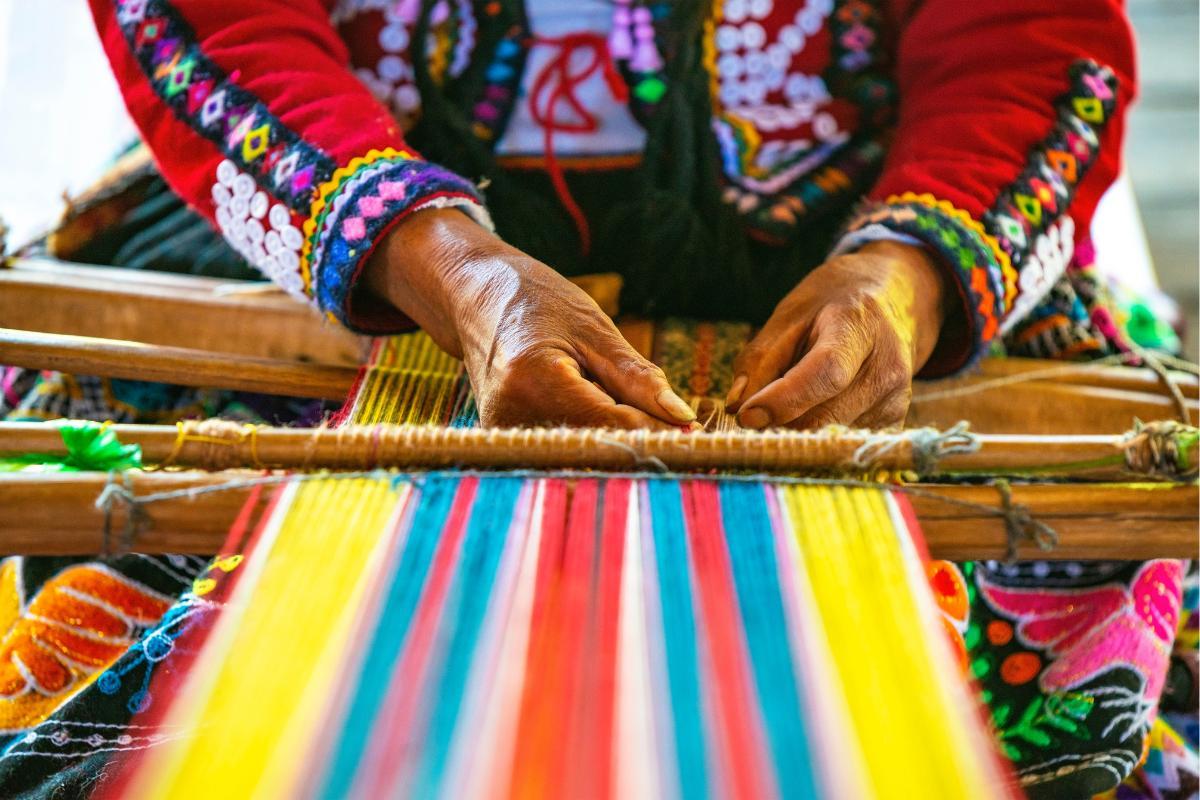What Are the Principles of Fair Trade?


The fair trade movement is a response to the inequalities and unfair practices present in the global economic system. This system has resulted in exploitation of various producers and workers by consumers around the world. The fair trade movement is defined as an ethical and socially responsible approach to the exchange of goods between producers in developing countries and these global consumers. This model seeks to guarantee decent working conditions, fair prices for producers, promotion of sustainable practices and transparency in the supply chain.
We learn more with thedailyECO by asking what are the principles of fair trade? We also provide examples of these fair trade principles in action.
What is fair trade?
Fair trade is an ethical and socially responsible approach to the exchange of goods between producers and consumers. Although fair trade principles apply to every nation, its establishment has a particular focus on ensuring developing countries have equity in terms of trading with other nations. This is as a result of the increased globalist approach to trade and the technological developments which have facilitated it.
The fair trade movement is based on principles of justice, equality and sustainability. It aims to improve the living and working conditions of marginalized producers. In doing so, it promotes fairer and more transparent business practices.
In fair trade, respect for human, labor and environmental rights is prioritized. This means that producers receive a fair price for their work, allowing them to cover production costs and live with dignity. In addition, equality is engendered in more than just economic terms. Gender equality is promoted, child labor is prohibited and any form of discrimination is to be challenged.
Discover more about how these principles can be applied to other areas with our article explaining what is integral ecology?
Characteristics of the fair trade movement
The history of the fair trade movement shows a slowly growing endeavor which has seen many adaptations over the years. Its remit, scope and approach has evolved as has the extent and understanding of global trade systems. However, there are some general characteristics which can help us to better understand how the fair trade movement was established:
- Transparency and traceability: in fair trade, transparency is promoted throughout the supply chain. Thanks to this, detailed information is provided on how products are produced, processed and marketed. Consumers can trace the origin of products and verify that ethical and environmental standards have been followed.
- Democratic participation: fair trade organizations typically operate democratically, with a governance structure that allows for equal participation of all members. This includes producers, workers and consumers.
- Fair Labor Practices: fair trade is committed to ensuring decent and safe working conditions for workers, in farms, factories and workshops, as well as in processing and production facilities.
- Environmental protection: fair trade promotes sustainable agricultural practices that minimize negative impact on the environment.
- Community empowerment: fair trade seeks to empower local communities, especially the most vulnerable. It does so by providing them with opportunities for economic and social development.
- Education and awareness: fair trade is not simply limited to commercial transactions. It also seeks to educate consumers about the injustices of conventional trade and the importance of supporting ethical and sustainable business practices. Awareness is promoted on issues such as poverty, inequality, child labor, modern slavery and environmental degradation. Doing so promotes more conscious and responsible consumption.

What are the fair trade principles?
We have looked at the characteristics of fair trade, we can better understand its ethos by lookin at fair trade principles in more detail:
- Paying a fair price: this principle refers to ensuring that producers receive a price that covers the sustainable costs of production. It also should provide scope to invest in social, economic and environmental improvements. The fair price is established through equal dialogue between producers and buyers. It is usually higher than the conventional market price.
- Direct and long-term commercial relationships: fair trade fosters stable and lasting commercial relationships between producers and buyers based on trust, respect and transparency.
- Fair working conditions: workers involved in the production of fair trade goods are ensured to enjoy safe and decent working conditions.
- Prohibition of child labor and forced labor: fair trade categorically rejects child labor and any form of forced or coercive labor.
- Gender equality and female empowerment: fair trade promotes gender equality and women's empowerment at all stages of the supply chain.
- Respect for the environment: responsible and sustainable production and consumption are promoted, minimizing the negative impact on the environment and promoting the conservation of natural resources and biodiversity.
Despite the principles of fair trade being used to best ensure global trade equality, it is important to remember that it is an ongoing process. Some of the actions and structures around fair trade initiatives have received criticism, such as the fact that growers and producers need to pay for their certification. This is argued by some to place an unfair financial burden on those already being exploited by global trade markets.
Counterarguments to these criticisms state that the cost of certification is relative to the size of the producer, with already well-estbalished producers paying more than nascent small businesses. The money for the certification is designed to be reintroduced into the system to help ensure fair trade standards are continuously met.
To ensure the principles of fair trade are being met it is vital that fair trade organizations provide transparency and accountability. Issues with pricing and environmental stability have also been levied against these organizations, something that would contradict their principles if ture.
Examples of fair trade practices and products
There are numerous examples of fair trade practices. Let's look at some concrete examples of how fair trade is practiced in different industries by looking at common products which can be sold under fair trade certification:
- Coffee: coffee is perhaps the the most emblematic fair trade product. Many small producer cooperatives in countries such as Colombia, Costa Rica and Ethiopia participate in fair trade programs that guarantee a fair price for their coffee.
- Chocolate: the chocolate industry has also embraced fair trade as a way to address issues of labor exploitation and poverty in cocoa-producing regions such as Ghana and the Ivory Coast.
- Fruits and vegetables: in the fruit and vegetable sector, fair trade initiatives are being developed to ensure that agricultural workers receive living wages and enjoy adequate working conditions. You may have seen a fair trade sticker on a banana, fruit which is often imported from developing countries into developed countries.
- Crafts and textiles: fair trade also extends to the crafts and textiles sector, working with communities of artisans and weavers in countries such as India, Bangladesh and Peru.
- Cosmetics and personal care products: in recent years, there has been an increase in demand for cosmetics and personal care products with fair trade ingredients. Argan oil, shea butter and coconut oil are some of the most commonly produced.
Discover how similar principles to fair trade are employed in a related industry with our article asking what is solidarity tourism?

World Fair Trade Day
World Fair Trade Day is celebrated every year on the second Saturday of May. This day aims to increase awareness about fair trade and promote its importance in building a more equitable and sustainable economic system globally.
During World Fair Trade Day, a variety of activities and events take place around the world to educate people about the principles and practices of fair trade. They are also designed to highlight and celebrate the positive impact it has had on producing communities.
Some of the common activities include fairs and markets, conferences and seminars, educational activities, awareness campaigns and community events. In many communities, community events such as concerts, festivals and food fairs are organized to celebrate World Fair Trade Day.
Discover how fair trade practices can be implemented to support marine trade with our article explaining what is the blue economy?
If you want to read similar articles to What Are the Principles of Fair Trade?, we recommend you visit our Society and culture category.







